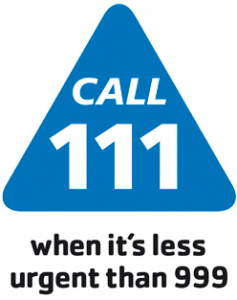Children with Down syndrome have symptoms that contribute to fine and gross motor delay. These include:
Low muscle tone
Children with Down Syndrome tend to have quite floppy muscles (hypotonia or low muscle tone). This makes it harder for them to move and can affect all aspects of their physical development.
For example, in lying, their arms and legs will often rest flat on the floor or it may be difficult for them to learn to pull into a standing position.
Although the hypotonia will never disappear completely, with appropriate stimulation and good positioning, your child will develop movement skills following a typical, but delayed pattern.
Hypermobility
Children who have low muscle tone can be very flexible. They are often described as having lax ligaments, hypermobility or being double-jointed. This is because the muscles do not hold the joints together as tightly as in people with normal muscle tone. In most cases, although hypermobility is a factor in gross motor delay, it does not have any serious effects.
This extra flexibility is usually most noticeable in the fingers, elbows, ankles and knees. It can make it hard to control the position of the joints. People with hypermobility can find it difficult to know where their body is in relation to their environment, e.g. when walking on slopes, different surfaces, where obstacles / furniture are.
Muscle strength
Muscle strength of children with Down Syndrome can be reduced compared to other children of the same age. This can contribute to gross motor delay as children lack the strength and endurance (ability to keep going) to learn new skills quickly.
Muscle strength and endurance will improve as your child becomes more active, but children with Down Syndrome may continue to be less co-ordinated than their peers.
Children with Down Syndrome often have shorter arms and legs than other children, which can make some physical activities harder, e.g. when they are learning to sit and want to balance with their hands.
Turning away from support
Reaching between two pieces of furniture or bridging gaps- place two pieces of furniture close together, with your child stood at one piece of furniture encourage them to reach across for toys or to step across to the other piece of furniture.
Squatting
- When standing encourage your child to squat down to the floor to pick up a toy.
- Your child may initially hold on and reach down with one hand while standing.
- Their legs may stay straight, and they may fall down.
- As your child's muscle strength and control improves, they will start to bend their knees to reach further, then rise back up to standing.
Independent standing
- Place your child in standing holding your hands away from a support, then once they have their balance gently let go of their hands and see how long they can stand for.
- Encourage lifting both hands off a support to reach for toys.
- Play games encouraging your child to balance while you count or sing a song etc.
Cruising
- Position your child at a firm support e.g. sofa, coffee table which is roughly at chest height.
- Your child should stand upright, facing forwards and hold on with both hands.
- You can give support at you child's hips gently guiding their weight to shift onto one leg to help your child free the other leg to step sideways (see picture).
- You may need to help your child position the leading leg out to the side, then guide them across to that leg to enable them to step the other leg across in the same direction.
- Practise this in both directions.
References
- Winder PT (1997) Gross Motor Skills in Children with Down Syndrome; A Guide for Parents and Professionals, Woodbine House Inc.
- Diamant RB (1992) Positioning for Play: Home Activities for Parents of Young Children, Therapy Skill Builders
- Crombie S (1997) Physiotherapy Home Programmes for Children with Motor Delay, Winslow
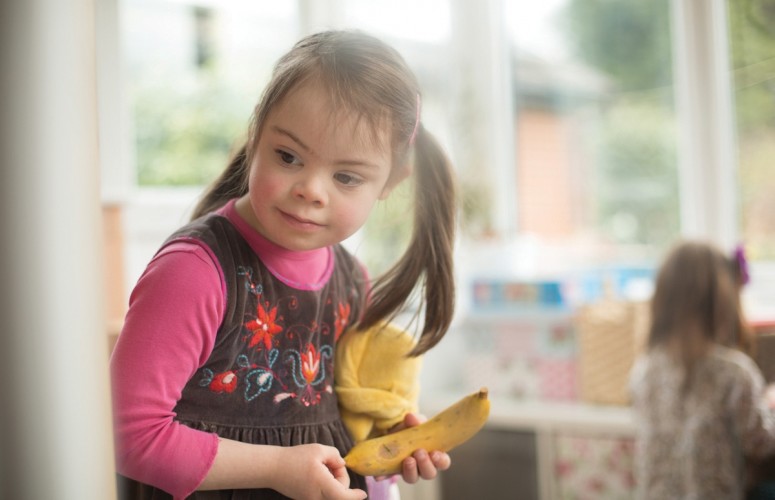

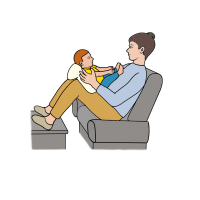 Position
Position Position
Position 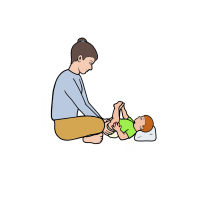 Position
Position 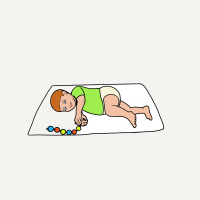
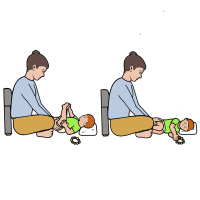 Rolling front to back often comes before back to front
Rolling front to back often comes before back to front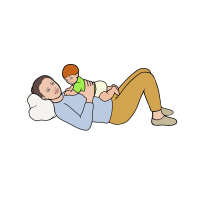 High support position
High support position 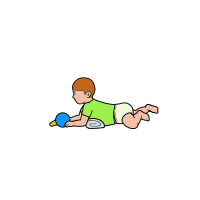 Medium support position
Medium support position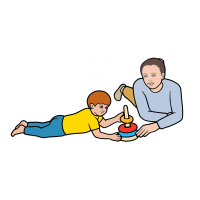 Minimal support position
Minimal support position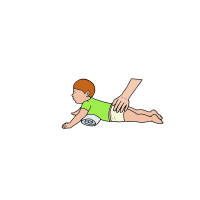 Position
Position 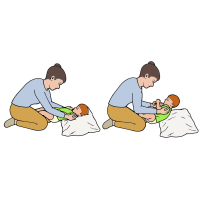
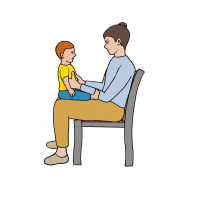 Position
Position 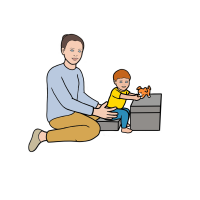 Position
Position 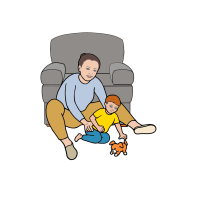 Side-sitting is important for developing control of turning the body. This is needed for crawling and walking.
Side-sitting is important for developing control of turning the body. This is needed for crawling and walking. Moving into sitting from lying
Moving into sitting from lying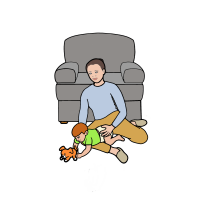


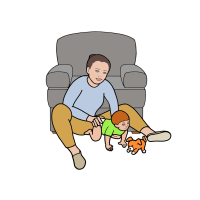
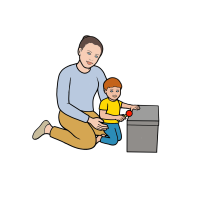 Position
Position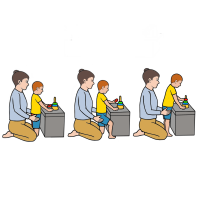
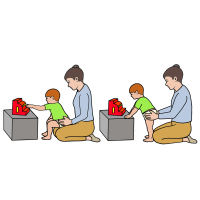
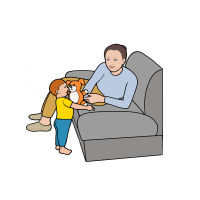 Position
Position
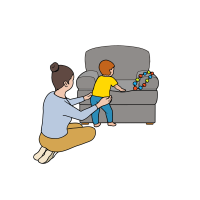
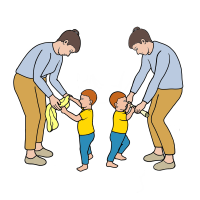 Encourage
Encourage 